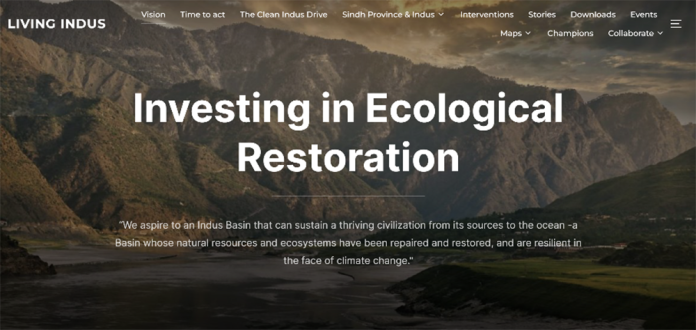What Indus River means for Pakistan?
For Pakistan, she is the mother river that nourishes the entire country with her blood. But perhaps a more intuitive set of data could make it clear how important this river is: 90% of Pakistan’s people and more than three-quarters of its economy resides in the Indus Basin, more than 80% of Pakistan’s arable land is irrigated by its waters, as well as nine out of the ten largest cities in Pakistan are situated within 50 km or less of the waters of Indus; the one exception being Quetta.
The Indus River has served as the vibrant core of the social, cultural, and economic life of what is today called Pakistan for well over a documented 5,000 years. But, today, one is forced to wonder if it will be able to do so even for another 100 years?
“The situation is extremely worrying,” noted Shoaib Kiani, Assistant Professor at the University of Karachi’s Institute of Marine Science during an interview, stressing that before Living Indus, there was no any comprehensive plan to manage the Indus. Without strong intervention, the river will soon degrade to such an extent that it is doubtful whether it will continue to exist. “If we hope the Indus to continue flowing for the benefit of future generations, programs like Living Indus are our only hope.”
Following devastating floods caused by climate change in 2022, Pakistan’s parliament approved the Living Indus Initiative and formally launched it at COP27. The initiative recognizes the Indus River as a living entity with rights. It has been recognized as a World Flagship for Restoration, which is part of the United Nations Decade on Ecosystem Restoration and recognizes initiatives that help protect and restore the natural world. Beside ensuring water supply for homes, farms and factories, the initiative aims to restore 40% of the Indus River basin in Pakistan, or about 25 million hectares of land, as well as create more than 200,000 green jobs by 2030. At the latest figures, about 1.3 million hectares of land have been restored. But for sure, it doesn’t go far enough.
In the face of climate change and environmental degradation, Living Indus has also reintroduced a technique called glacier grafting. This indigenous technique has practitioners transporting ice and building so-called stupas, which are cone-shaped piles of ice. These structures help regulate water flow and increase the amount of water available for crops.
“Undoubtedly, this unconventional approach should be tested at a micro level first. But given the tight timeline, we need to take every possible solution.” Prof Kiani emphasized that multiple protection measures must work together to achieve better results, including developing and enacting integrated river management plans, enacting legislation such as the Indus River Act, and learning cutting-edge techniques from other parts of the world.
“Not only ecological management, the program focuses on community disaster risk management, physical flood protection and early warning systems, and is really focused on improving the ability of communities to respond to disasters, ” Jehanzeb, coordinator of Living Indus, said.
Shoaib Kiani made a more detailed analysis on this point. “Physical flood control and early warning systems are urgently needed. To my way of thinking, China and Pakistan, as close neighbors with frequent natural disasters, must ensure that we learn from each other’s experience, achieve technology transfer, and train machinery, equipment and skilled labor in the field of disaster response.”
The professor believes that since the two countries have a lot in common in terms of topography and ecology, the right strategy implemented in one country is likely to bring good results in the other. China’s green organizations, especially those engaged in green technology, organic sustainable agriculture, sustainable aquaculture, ecological restoration, hydrology and the like, should be invited to Pakistan to actively explore opportunities to achieve the goal of a community with a shared future for mankind.
“Pakistan has seen heartbreaking climate-induced disasters in recent years, causing destruction on a scale that no country can or should accept,” said Inger Andersen, Executive Director of the UNEP. “It is therefore important to recognize and support projects like the Surviving Indus initiative, which can bring hope and resilience to Pakistan and the region.”


